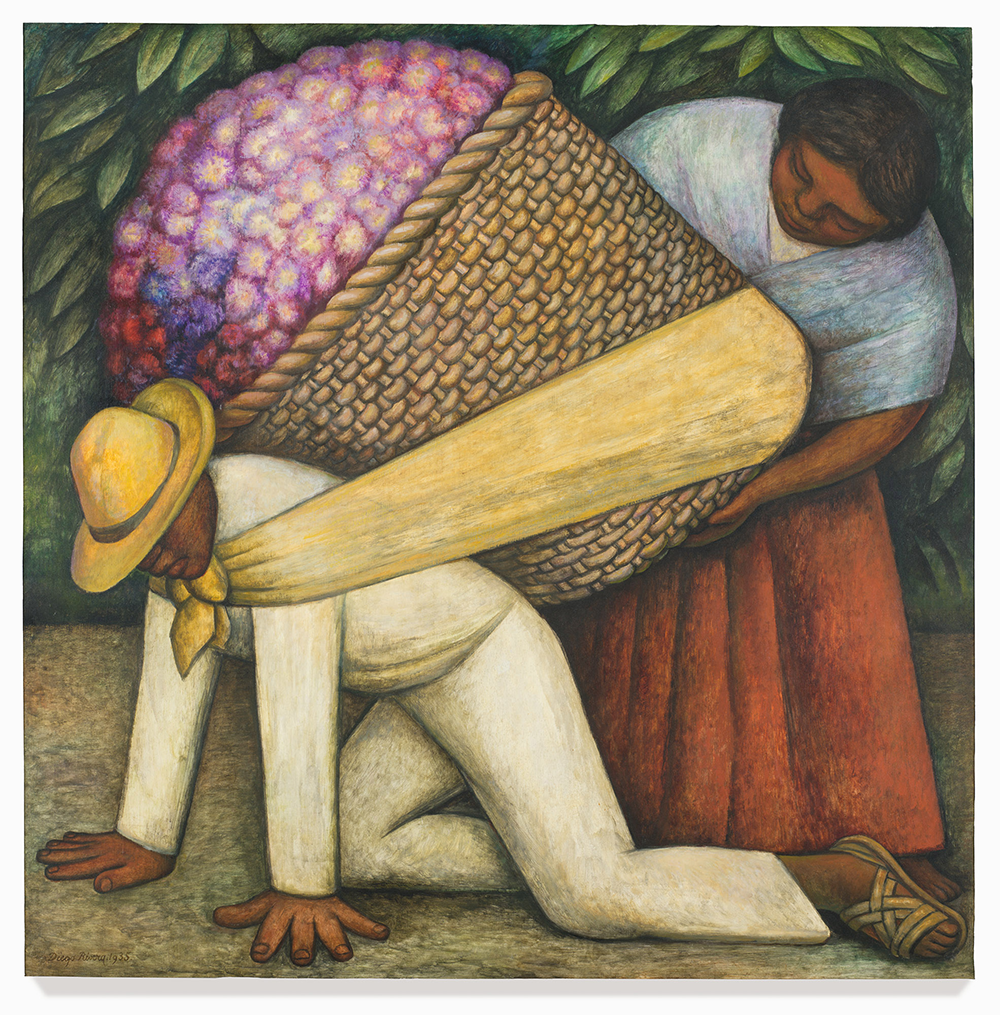Diego Rivera’s artistic oeuvre is so connected to our collective unconscious that touring this exhibition of 150 paintings, frescoes and drawings, feels like a homecoming. The show also includes film projections of murals that the artist created in Mexico and the US and comprises the most in-depth examination of his work in over two decades. This exhibition is an artistic compendium of what Rivera referred to as life in all the Americas, as he believed that the US and Mexico had complementary histories and creative proclivities. He stated in 1931: “I mean by America, the territory included between the two ice barriers of the two poles. A fig for your barriers of wire and frontier guards.”
This magnanimous show includes romanticized depictions of indigenous people going about their daily lives, laboring, marketing, caring for children and relaxing, with many figures illustrated with rounded forms, for simplicity and accessibility. Other influences include the neutral poses and mask-like faces of pre-Hispanic Aztec art. As exhibition guest curator James Oles remarks in the catalog about the politically active artist, “Rivera would wield his art as an essential weapon—sometimes blunt, sometimes subtle or seductive—in the utopian struggle for greater racial and social equality, security, and justice.”

Diego Rivera, Still Life and Blossoming Almond Trees, 1931; Stern Hall, University of California, Berkeley, gift of Rosalie M. Stern; © 2022 Banco de México Diego Rivera & Frida Kahlo Museums Trust, Mexico, D.F. / Artists Rights Society (ARS), New York; photo: © The Regents of the University of California.
One of the most dramatic paintings in the show, Dance in Tehuantepec (1928) features three young women wearing traditional, colorful Mexican flowing dresses and exotic jewelry, and their three male companions wearing cream-colored garb and broad sombreros. All dancers are engaged in precise choreographed steps, displaying deep concentration and the cultural importance of the dance—a testament to Rivera’s keen powers of observation. The more intimate The Flower Carrier (1935) features a man on all fours, his back burdened by an enormous basket of brightly colored flowers. A large woman behind him, presumably his wife, is helping him stand. This domestic scene conveys Rivera’s empathy for the common laborer as hero. The picturesque Still Life and Blossoming Almond Trees (1931) was originally a fresco created for a private home. The piece contrasts hard-working field hands cultivating crops in an almond grove, with smiling young children enjoying the fruits of the worker’s efforts. “A lot of Rivera’s work was about reminding the viewer, who was usually elite, of the essential importance of the working class in creating society,” Oles said. “We need to be reminded again and again of the fact that prosperity rests on the backs of others, most of whom don’t enjoy that same level of fortune.”
The exhibition concludes with Rivera’s final mural, The Marriage of the Artistic Expression of the North and of the South on the Continent, 22-feet-high by 74-feet-wide, painted in front of audiences at the 1940 Golden Gate International Exposition. Known as Pan American Unity, it is comprised of ten panels, seamlessly joined together, now installed on floor one of SFMOMA. With the Bay Area as background, people depicted include indigenous inhabitants in the U.S. and Mexico, our founding fathers, laborers, artists, architects, inventors, and even Olympic style swimmers, all celebrating our adventurous, creative spirit.


